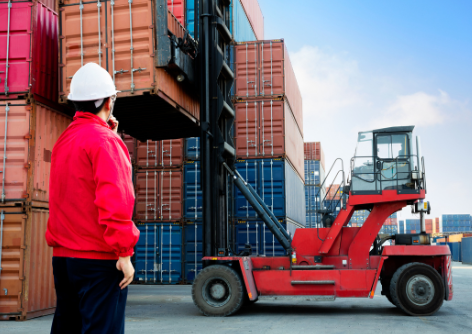International trade is expensive, but there are many avenues you can try to save on costs. One of the most important factors- cargo damage in transportation- may be minimized with a few tips. Here we share some ways to make sure your goods will arrive safe and sound!

What Constitutes Shipping Cost?
There are multiple variables that constitute in building the cost of shipping – shipment weight, dimensions, origin, destination, mode of transport, packaging, etc. Our previous post can guide you on how to calculate the cost of shipping. There are also many ways in which you can save your cost of shipping like choosing to ship on non-peak days, planning your shipments in advance, considering multi-modal transport, minimizing the possibility of cargo damage, etc.
Tips to Reduce Cargo Damage
You can help the shipping process by ensuring that products are in an optimal state before they ship. It would reduce your total cost of shipment and increase efficiency throughout the entire supply chain.
Here are some of the top tips to reduce cargo damage to ensure cargo safety:
Proper Packaging: When selecting the right packaging, you should always consider both the type of your cargo and how it will be transported. You’ll want to choose a material that can protect your goods during transit-based on factors like their shape or fragility. Some materials available are bubble wraps, air bags, foam molds and corrugated inserts, choose one that best suits what you’re shipping.
For cargo management, you need to choose the right pallet that will fit your specific dimensions. Wooden, plastic and metal are all types of pallets available for use. The most popular type is wooden because it can help minimize your shipping costs and lower the risk of damaging your load when using other materials like metal or plastics which have a higher risk of bending or tearing from pressure once loaded with heavy objects on it. To seal these products against water exposure, light damage and more environmental damages.
Container Filling: It is highly recommended that you stack the containers carefully. Make sure to place heavy items at the bottom, and then stack others on top of them in an overlapping cube pattern so that your boxes and pallets are always stacked correctly when coming into transit.
Double stacking pallets can lead to damage as well, especially when the pallets stacked above are lightweight, fragile or delicate. The top of your cargo should be flat, leaving no boxes loose on top. We recommend strapping and wrapping these individual boxes properly to avoid any damage.
Do not leave any empty spaces in the container. Empty space means your cargo will have more room to move around inside, which increases the chance for it to be damaged. To limit movement and fill any empty spaces, use box sizes that restrict its mobility (or insert appropriate filler items).
Appropriate and Clear Labels:
Packing and labelling your shipment appropriately is important. Labels should be printed on sustainable, durable paper that provides all of the content information readily available about what’s in the box. A bill of lading includes this information and makes it easier for all parties involved to ensure cargo does not get damaged during transit-and can help save you a lot by avoiding damage to goods! If freight gets damaged during transport, it cannot be sold nor reused; this poses a threat to business revenue if something goes wrong in transit. Follow these tips for successful shipping: drop us any questions or queries here on our company’s site!





 APP DOWNLOAD
APP DOWNLOAD